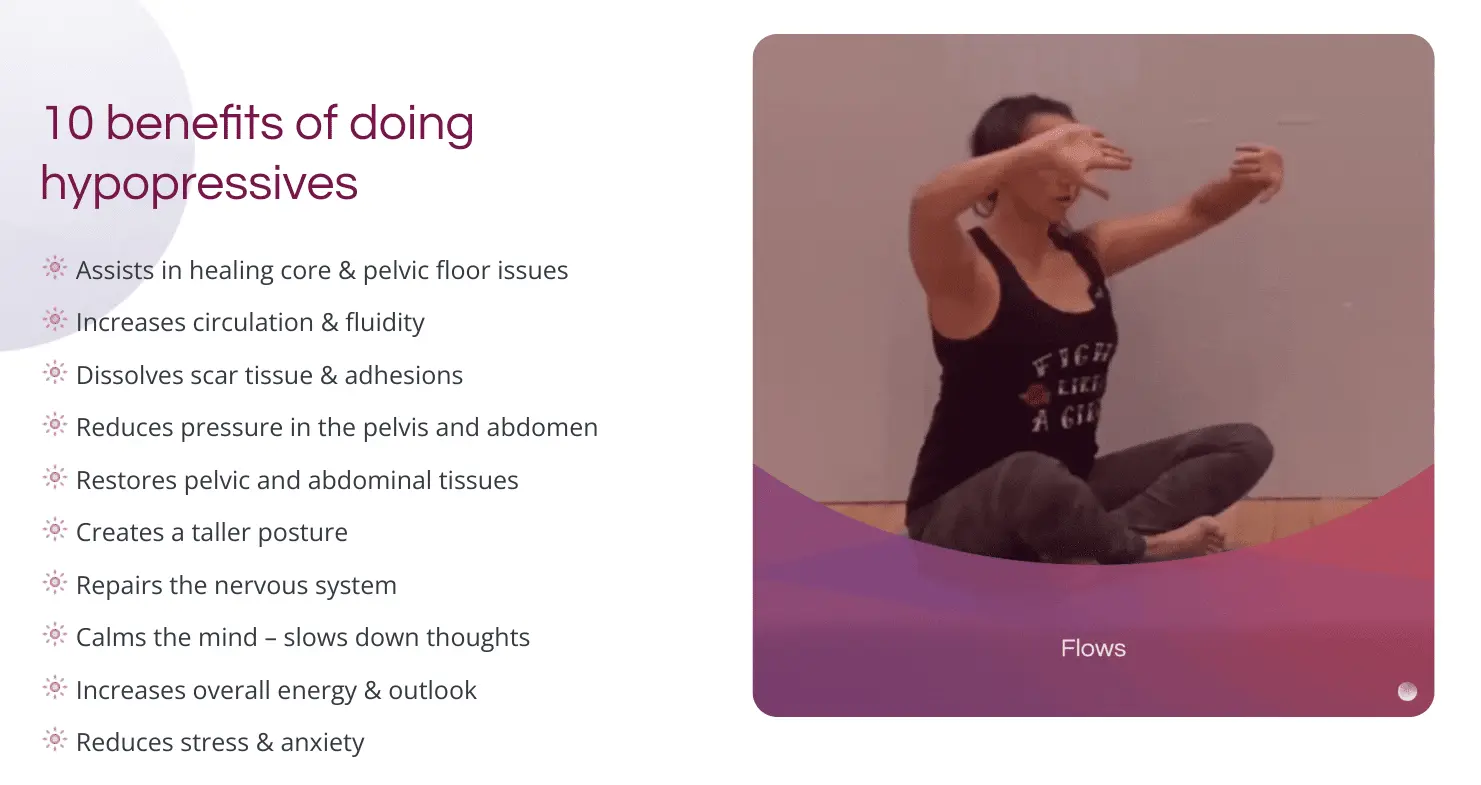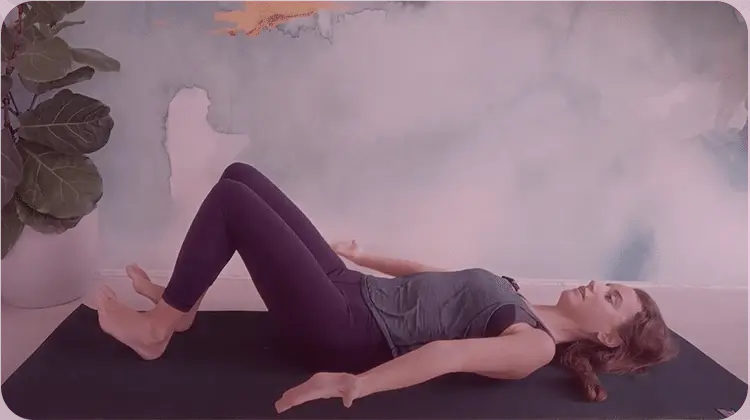Diastasis Recti Surgery: Is it really worth it?
- October 12, 2022
- Diastasis Recti
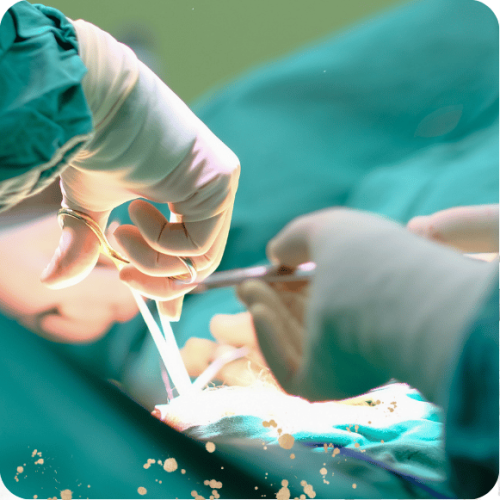
It’s not an easy choice – deciding between getting surgery or not. The decision becomes even harder when you’re not sure what the alternative is. And even if there is an alternative, how do you know if it works?
This is the dilemma for women who consider having surgery for Diastasis Recti. It’s common for doctors or health care practitioners to recommend surgery, but not to tell women what their other options are.
So of course, women can feel lost and unsupported during this time. It’s a difficult place to be. I know, I was there once. And this is what I want to talk about in this blog.
Let’s go into detail about what your options are to correct and fix Diastasis Recti. Because yes, you do have options to close the gap and separation in your abdominal muscles naturally, without surgery.
How does Diastasis Recti occur?
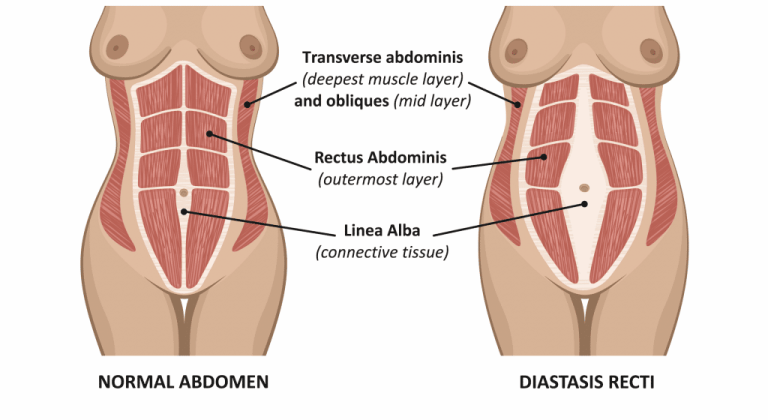
Diastasis Recti affects every single pregnant woman in some way. In fact, 6 months after giving birth, 2 out of 3 women will still suffer from this condition.
Why?
As your belly expands during pregnancy, it puts stress on the abdominal fascia, known as the linea alba. The fascia stretches, kind of like pulling on a rubber band or taffy, to allow your belly to accommodate the growing baby.
When the fascia endures this much strain and pressure, it can become weak and over-stretched, creating many different health-related issues and symptoms such as:
- A pregnant-looking pooch
- Pelvic organ prolapse
- Bulging in the abdomen (from organs coming forward)
- Urinary stress incontinence
- Lower back pain
- Bloating, constipation, or other digestive issues
- An “outie” belly button that used to be an “innie”
- An umbilical hernia
- Inability to engage your core in everyday movements or while exercising
Sadly, surgery is almost always recommended since Diastasis Recti (or abdominal separation) is not typically viewed by the medical system as a condition that can be corrected naturally. And if women don’t elect to have surgery, then they might be told that this is a “normal” side effect to pregnancy and to just live with it.
What does surgery for Diastasis Recti include?
Diastasis Recti surgery is a cosmetic procedure that also goes by the name “tummy tuck” or abdominoplasty. This surgery is meant to repair the gap in the abdominal muscles that most often occurs during pregnancy. The goal of the surgery is to get the belly to look similar to how it did before getting pregnant.
The surgery itself is an invasive procedure that requires a general anesthetic. And since it’s laparoscopic surgery, there’s a camera used to help perform the procedure.
When women with a large separation get a Diastasis Recti surgery, they may need several larger incisions, in order to pull the abdominal muscles back together. But, this ends up creating scar tissue (which is one of the root causes of DR).
Also, in these cases, there could be liposuction involved, significant skin removal, and possibly a belly button relocation.
For women with less severe diastasis recti, it may only require one or a few small incisions along with minimal skin removal. Yet, in most cases, the recovery time still takes somewhere between 6 to 8 weeks.
Some women opt for Diastasis Recti repair surgery based on their doctor’s recommendation, but they might not know how risky the surgery can be.
Risks of Diastasis Recti Surgery

First of all, invasive procedures come with scary risks and possible side effects. For example, getting surgery for Diastasis Recti (DR) can cause:
- Infections
- Long-lasting pain
- An uneven or lopsided belly
- Numbness
- Skin loss
- Swelling that does not go away
Here are some other downsides:
- It’s expensive. While prices vary in each country, the cost of surgery will likely fall somewhere between $5,000 – $20,000 or even more. This is just for the procedure. There will also be costs for medicine and other medical equipment you may need. And, since it’s classified as a cosmetic and elective procedure, insurance companies usually do not cover it.
- There may be complications such as wound infections, reopening of the incisions, swelling that doesn’t go away with time, lasting pain, asymmetrical belly, numbness around the incision spot, or more.
- You will have scarring. While scar tissue covers the wounds, it is not as elastic as regular tissue. In addition to muscle, the surgeon can cut into the fascia, (connective tissues) that enclose muscles. Fascia can heal, but it won’t regrow in the exact same way it did before. This can lead to restrictions in flexibility and movement as well as chronic pain.
- It doesn’t address the root cause of DR, so symptoms can come back. Scarred and stretched fascia in your stomach is how DR happens in the first place, and surgery only creates more scarring. There may also be other underlying causes as well, such as excess intra-abdominal pressure, poor posture and body alignment, bracing when lifting, improper form when doing core work, etc. So, how can you fully heal, 100%, with surgery? It’s definitely a band-aid approach that ignores the root causes.
This long list of risks and drawbacks to surgery made it easy for me to say “no thanks.” I turned down this option, and it was one of the best decisions I had even made.
My story with Diastasis Recti
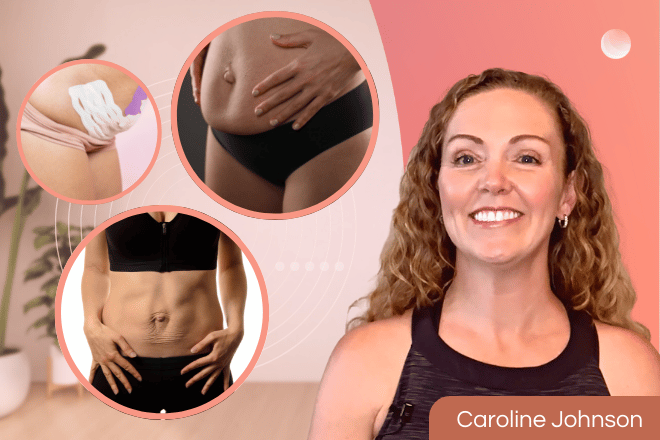
After the birth of my first daughter, I stopped riding horses professionally and became a certified Pilates Instructor with a focus on pre and post-natal fitness. This dovetailed nicely with my educational background in exercise science. I loved being a mom and working with clients, especially to help them heal postpartum.
Then, as fate would have it, after giving birth to my third daughter, I was the one who needed help healing postpartum. Fortunately, I was able to rely on my own knowledge, health & fitness expertise to heal Diastasis Recti.
My medical team didn’t give me a diagnosis of DR but based on the symptoms I experienced and from my exercise science and Pilates Instructor training, I knew I had some degree of diastasis recti.
When I learned how to do a self-test for DR, I found that there was an 8-finger separation. And based on other symptoms and with some research, I discovered that I had a painful umbilical hernia.
But I knew that surgery was not for me. I completely eliminated this option from my mind given the risky side effects.
Even though I felt powerless and lost, I started experimenting with many different methods, like exercises, diet, nutrition, etc, in an effort to heal my body, and eventually became certified in DR therapy and rehab.
I can now confidently tell you that it is 100% possible to get your body back and feel like you again, all from the comfort of your own home with safe and proven treatments.
And this is exactly what I do in my guided Diastasis Recti Program. I provide women with tools and resources to close the gap in their abdomen and rebuild their bellies and core muscles without surgery.
What can you do to heal DR naturally?
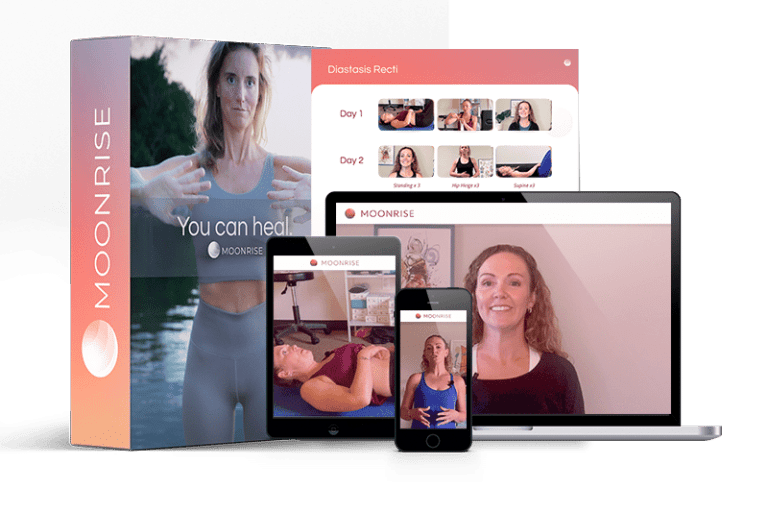
There are many things you can do to close the gap in your abdominal muscles, to help reverse symptoms of DR.
Here are a few ways to do it:
- Seek abdominal rehab: If you have been diagnosed with DR or suspect you might have it, find a professional local to you who specializes in core rehabilitation.
- Avoid crunch-like motions, sit-ups, planks, and high-impact activities. You may resume planks, running, and jumping ONLY once your diastasis has narrowed to a functional width and you can engage your core properly with each exhale as you exert yourself.
- Use “Diastasis-Safe” exercises when working out to reduce pressure in your core. Find a trainer that is knowledgeable about DR and can modify workouts appropriately. Your diastasis rehab professional can also provide you with workout suggestions and assist with any modifications that you may need to make.
- Move correctly throughout your day. Be aware of engaging the transverse muscle throughout your daily activities and while working out. The more you can engage, the less intra-abdominal pressure will be exerted on the connective tissue, and the faster it will heal.
Curious to learn more or have any questions about what you read in this article? If so, please join me live for a free webinar I’m hosting called “How to self-diagnose for DR and 5 mistakes to avoid to start healing”.
There are limited spots available, so please sign up here and join us!
Blog posts you might like:



